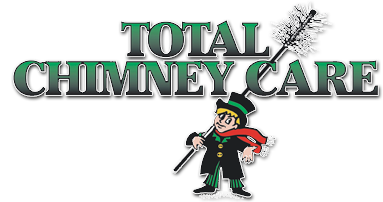If you have a wood-burning fireplace, fireplace insert or heating stove, you undoubtedly have heard of creosote. You likely know that your chimney sweep’s goal is to remove creosote from your chimney to prevent chimney fires. But what exactly is creosote? How does creosote form? And what, exactly, are the dangers of creosote?
What is creosote?
Creosote is the substance the builds up inside your chimney when you burn a wood fire. Usually, when people refer to creosote, they refer to all of the buildup within the chimney, which includes the creosote itself, soot, ash and tar. Creosote buildup can be hard and smooth or sticky and tar like. Creosote can be dark brown in color or a dark black.
How does creosote form?
When wood burns, the smoke that travels up the chimney carries all sorts of byproducts, including unburned wood particles, tar fog, hydrocarbon, water vapor, gases like carbon monoxide and minerals. As the smoke that carries the byproducts travels up the chimney, it cools and forms condensation on the chimney walls. That condensation hardens over time into creosote.
What are the dangers of creosote?
For the average homeowner, the biggest danger of creosote is a chimney fire or blockage. Creosote is highly flammable. If it builds up too thickly within a chimney — as little as one-eighth of an inch buildup is considered dangerous — creosote can catch fire and ignite the entire chimney.
If neglected long-term, creosote can build up so thickly within a chimney that it can prevent smoke and gases from escaping the fireplace altogether; that can cause carbon monoxide and other gases to build up dangerously within your home. Creosote can be a health hazard, causing everything from skin and eye irritation to lung damage, but only to people who are in regular, direct contact with creosote and creosote particles.
How can you keep your home safe from creosote?
While creosote can pose a danger to your chimney and your home, it doesn’t have to. Regular chimney sweepings clear away creosote to reduce your risk of a dangerous chimney fire. Per the National Fire Protection Association, chimneys should be swept and inspected at least once per year to eliminate a fire hazard. If you use your fireplace heavily each winter, you might want to consider having your chimney cleaned again during the fire-burning season.
How can you reduce creosote buildup?
In between chimney sweepings, it’s also positive to slow the accumulation of creosote within your chimney. Cooler, less efficient fires cause more condensation, and thus more creosote, to build up within the chimney. Burn only hard, seasoned firewood in your fireplace. Fireplace doors and the fireplace damper should be opened fully each time a fire is burning so the fire can get adequate oxygen to burn hotly.
If your chimney is due to be cleared of creosote, call Total Chimney Care to schedule an appointment today! We can clear away any dangerous creosote and answer any questions you have about creosote formation and how to reduce its buildup in your chimney.
